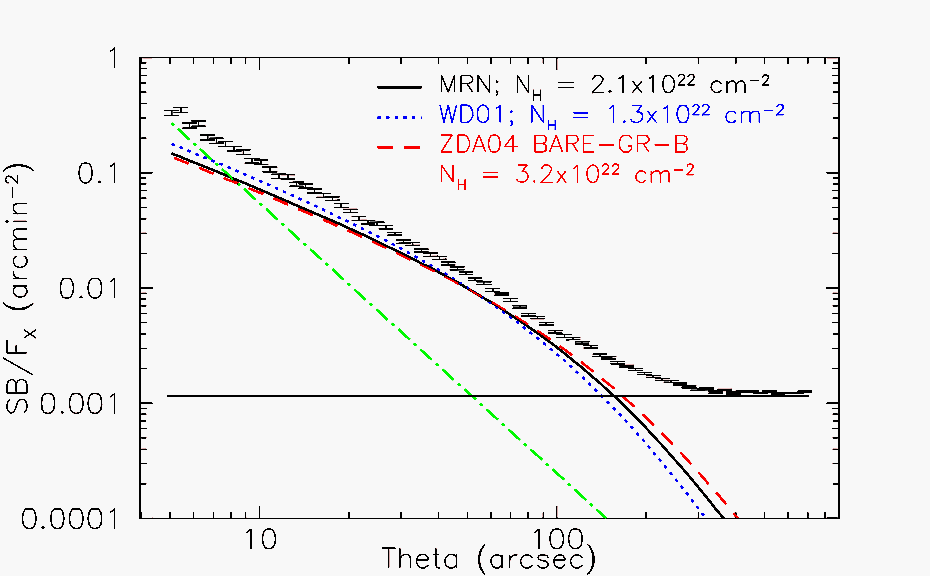The HRC continues to operate smoothly with no major problems or
anomalies. Ongoing monitoring of the HRC QE (via observation of
AR Lac) and UV sensitivity (via observations of Vega) indicates no
change in either. As noted in our previous newsletter, there was
some concern that the increased radiation dose received by the HRC
may have weakened the polyimide in the UVIS. Such weakening would
manifest itself as increased UV sensitivity. The HRC gain
continues to slowly drop due to the extraction of charge by X-ray
and particle events. This effect is still small and any necessary
increase in the MCP high voltage to recover the detector gain is
several years away.
The secondary science telemetry of several HRC observations made in
mid-December, 2005 was corrupted for reasons yet unknown. This
problem has not been observed in any observation since, including
the 500 ks observation of 47 Tuc at the end of the year. The
instrument team, the CXC, and the Chandra FOT are continuing to
investigate this problem. It is currently thought that this may be
a thermal issue unrelated to the HRC.
The HRC laboratory was moved from Porter Square in Cambridge, MA,
to new facilities in the Cambridge Discovery Park (near the
Alewife T station) in Nov/Dec 2005. The instrument team is in the
process of re-assembling the laboratory to support on-going HRC
operations.
The HRC has been used to make a wide range of scientific
investigations over the past year, including deep observations of
the globular cluster 47 Tuc, M31*, and the nucleus of NGC 5548.
Here we present preliminary results from one of the HRC
observations of the past year, a study of the small angle
dust-scattering halo around GX 13+1.
Smith, Edgar & Shafer (2002) analyzed the X-ray halo seen by ACIS around GX13+1 between 50" to 600", finding that the data fit both the Mathis, Rumpl & Nordsieck (1977; MRN) and Weingartner & Draine (2001; WD01) grain distributions, although with very different best-fit N values. A low NH was found for the WD01 model, along with slightly inferior fits compared to MRN. Draine (2003) noted that these oddly low NH values found for the WD01 above might be explained by dust near the source, to which the ACIS observations were insensitive. Xiang et al. (2005) analyzed the halo of GX13+1 along with 16 other sources from the zero-order HETG image. In all cases, they found that the majority of dust along the line of sight is very near the source, and proposed that all or most XRBs are surrounded by molecular clouds. To test this, they obtained 9 ksec of HRC-I data (without a grating) on Feb 8, 2005. These data allowed them to measure the halo (albeit without any spectral information) for three of the sources; this is the first time an X-ray halo has been measured this close to a source. (Figure 11) Since the GX13+1s spectrum is variable, they also obtained simultaneous RXTE data to measure it.

FIGURE 11: Normalized radial surface brightness profile of HRC-I observation of GX 13+1 (including error bars). The green line is the Chandra PSF, the solid black line is the background level, and the other three curves are scattering from dust grain models described in the text.
They also used HRC-I Chart simulations to determine the PSF, the same
tool used to calibrate the Chandra PSF. The initial analysis
simply fit a smooth dust distribution using a flux-weighted halo
model. Although none of the fits are formally acceptable
(χ2 =
3.4-6.5), they show no sign of significant dust near the source.
They were therefore able to confirm the results from the ACIS
observation, with the WD01 model again showing the worst fit
along with a low column density. However, they note this result
crucially depends on the Chandra PSF (the green curve) and the
spectral model of the source, so additional work is
needed.
Ralph Kraft and Almus Kenter
References